Uber meets local lookalikes in Asia taxi-app wars
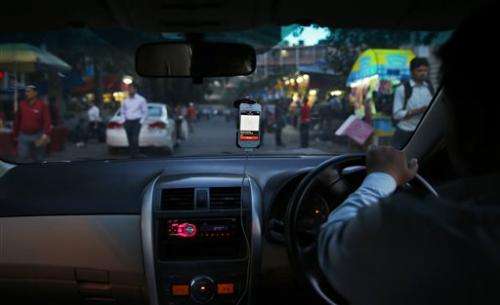
Riding on its startup success and flush with fresh capital, taxi-hailing smartphone app Uber is making a big push into Asia. There's a twist, though: Instead of being the game-changing phenomena it was in the U.S., Uber faces a slew of competitors using similar technology.
The concept Uber helped pioneer just four years ago has transformed some markets before it even had a chance to enter them. Homegrown taxi apps are already slogging it out for dominance in numerous Asian countries.
China has a taxi-hailing app called Kuadi that says it logs more than 6 million transactions per day. Malaysia-based GrabTaxi operates in five Southeast Asian countries and recently announced more than $10 million in new investment. India has two competing taxi-app companies, Meru Cabs and Ola Cabs.
The proliferation of taxi apps means that Uber, which raised $258 million in venture capital last year, much of it from Google Ventures, must distinguish itself from local companies as well as international challengers including Easy Taxi and Lyft. This month, Lyft got a $250 million cash infusion from investors including Chinese e-commerce giant Alibaba.
"We have to build our brand up from scratch in a lot of these places," said Sam Gellman, who is heading Uber's Asian expansion.
To compete against local lookalikes, Uber said it is taking a two-prong strategy. First, partner with local players who can tailor their business to demand, whether for fast no-frills rides or luxury cars on call. Second, target Asia's upwardly mobile business travelers who will appreciate having one service they can use in dozens of cities worldwide.
The company has in the last year started operating in 18 cities in Asia, Australia and New Zealand including Seoul, Shanghai, Bangkok, Hong Kong and five Indian cities.
Uber uses a free GPS-enabled app for customers to use their phones to summon rides, usually from a private car company instead of an ordinary licensed cab and promising a quicker response time that is often within 10 minutes. Drivers respond using their own Uber-provided smartphones mounted on the dashboard and follow the map to an exact location.
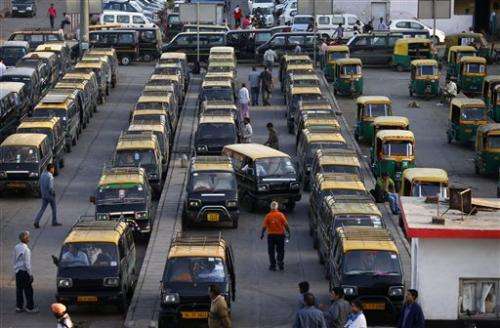
In the U.S. and Europe, Uber has variously drawn acclaim by urban customers tired of difficulty finding cabs and protests by taxi companies accusing it of running unlicensed taxi services. Just last month, an organization representing Seattle-area taxi drivers sued Uber, alleging it is involved in "unlawful and deceptive business practices."
Legal woes, though, are less of a problem in Asia than lookalike local competitors. The business models of Asian rivals vary: some run their own fleets, others depend on advertising, while Uber makes commissions on fares, but all employ distinctly Uber-like smartphone apps.
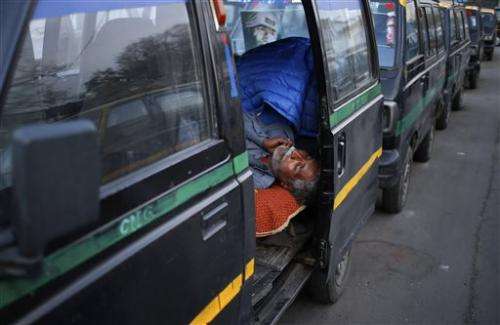
China's Kuaidi says its app is used 6.2 million times a day and makes 10 million yuan ($1.6 million) in revenue each month through advertising by linking customers to regular taxis.
Cai Jing, 29, a Shanghai-based purchaser for a food company, uses Chinese taxi apps a few times a week.
"They're way more effective at getting me a taxi than just waiting on the street," said Cai, who hadn't heard of Uber.
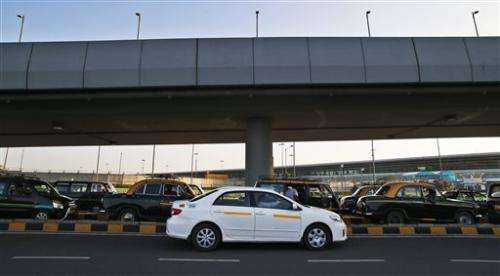
One market Uber sees huge potential in particular is India, with its vast population of 1.2 billion. In the last year, Uber has launched in Mumbai, Bangalore, New Delhi, Chennai and Hyderabad. That's more cities than in any other country except the United States.
Uber India's Jambu Palaniappan said the market is one of the fastest-growing he has seen. The company declined to give specific figures.
One reason for rapid growth in India is pent-up demand. In Mumbai, for instance, its distinctive black-and-yellow licensed cabs number just 42,000, inadequate for a city of 22 million. Plus, most licensed taxis are banned from having air conditioning under an archaic municipal rule, leaving passengers suffering with rolled-down windows in suffocating heat and noxious pollution. The city does allow air-conditioned "radio taxis," but getting one can take an hour or more.
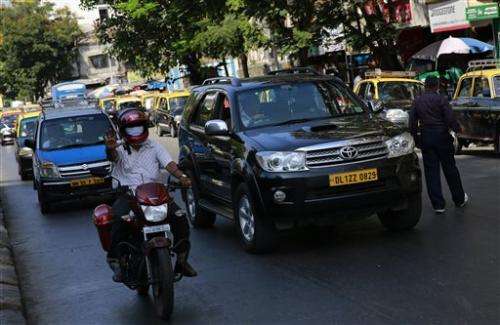
Newly minted Uber driver Dinish Karamsesula, whose employer partnered with the company in Mumbai, said he's busier since getting the smartphone mounted on his black SUV, usually only rented out by the day. He now makes several short trips a day.
"I'm on salary so I don't get the profits," he said. "But sometimes the customers are so happy with the car being cool and clean, they give me tips," he said, driving past weaving motorbikes, ancient Premier Padmini cabs, the occasional wandering cow and a bicycle loaded with sacks of rice.
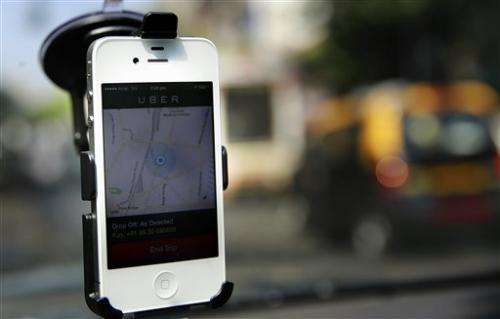
Still, Uber's Indian taxi-app rivals, both of which operate their own fleets, say they have little fear of the competition.
"We have a very strong understanding of what the Indian customer wants and needs," Ola Cabs spokesman Anand Subramanian said.
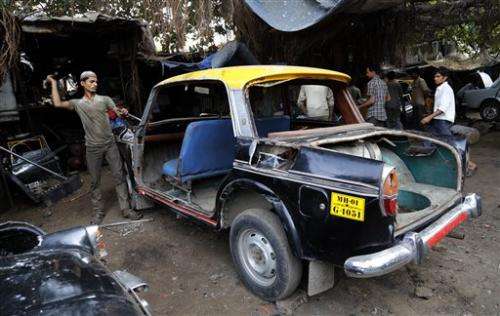
He said Ola operates on a cash basis while Uber only works with credit cards, which only a miniscule percentage of Indians have.
Other regional competitors focus on price. Anthony Tan, who founded GrabTaxi in 2012, said the company's rides are often half of what Uber costs.
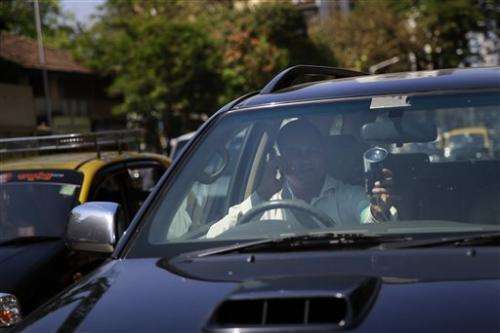
"We are very much focused on the mass market. People going to work and school, visiting their grandmothers in the hospital," Tan said.
Uber, however, is undeterred
"Once you are successful, you are going to have clones and copycats," said Palaniappan. "The more options the customer has, the better. It forces us to be better and more relevant, too."
© 2014 The Associated Press. All rights reserved.















